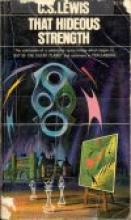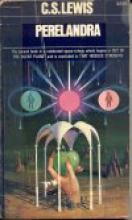Review:
The first story in the "Space Trilogy", Out of the Silent Planet begins with a man of such littleness that he is only known, for now, as the pedestrian. He is taking a summer holiday - trying to 'get lost' - from his philology professorship.
This is NOT a nailbiter yet.
By accident Ransom (Lewis himself was a Cambridge professor keen on words - so you know you have been given his name for a reason) stumbles onto an old schoolmate, Divine, and another professor, Weston, in a strange house. The bizarre scene sees them drug our poor Ransom and gives way to the much more bizzare rest of the book. They travel through space to Mars (or Malacandra as the inhabitants call it). But like a mystery novel the strange story starts to give way to order. Ransom is smart. He gathers that he is being brought back to Mars by these two as a sacrifice to creatures called Sorns. They had been to Mars before and started happily collecting gold there. But the inhabitants told them they would have to present themselves to the world leader. They dreaded this so much they returned to Earth just to retrieve that sacrifice, that Ransom! (see I told you)
Ransom escapes shortly after they arrive and goes about trying to survive, understand and finally love this new world. There are 3 or 4 species on the planet which are intelligent (it's handy to be a philologist when you have to learn a few new languages in a hurry!)
I can't tell you more because it really is a book that is hard to put down. After you get through the first bit you will drink in the rest with exceeding pleasure.
Lewis has given himself a tool to really explore different mindsets. Here he is not bound by current conventions - not even by 'terrestrial' conventions. In fact we are allowed to explore a world that is so different Ransom at first has trouble separating out the geographic, plant and animal features - they are all just a sort of blur when he first sees them. And just when he has allowed us to wonder about talking with different species he gives us some of the most eloquent defenses of what in life, in every life of every intelligent species, is good and strong.
There are many things to explore in this book. I am sure that I have not plumbed the depths of allegory and language that Lewis, a professor of Medieval and Renaissance literature, is sure to have woven in. But even the first reading will bring to the surface an abundance of issues to discuss and ponder.
This book could be read as early as 7th grade. But it would be better understood by high school age.


